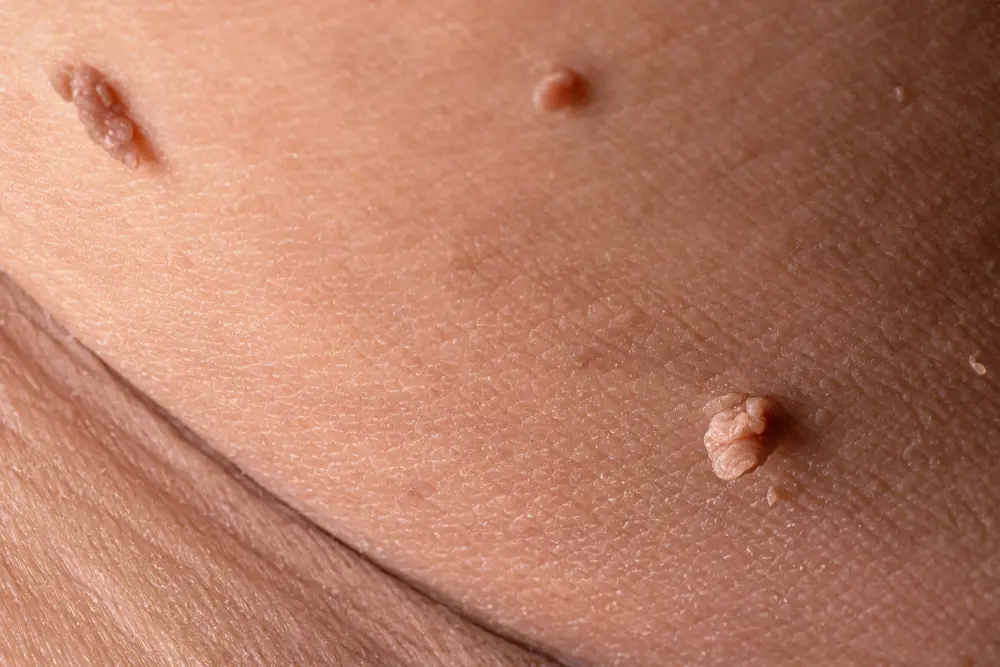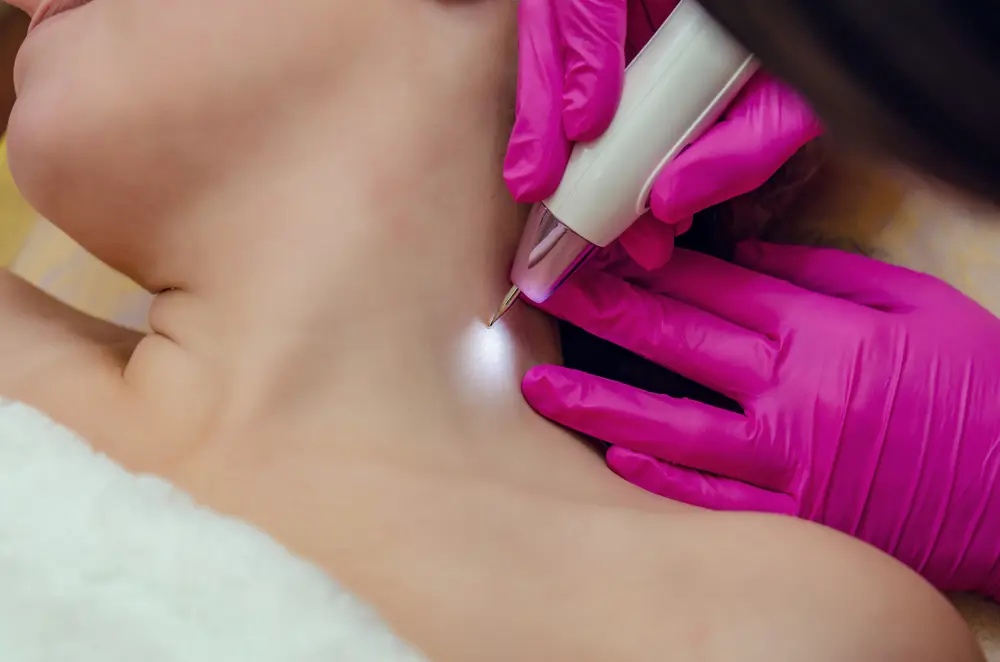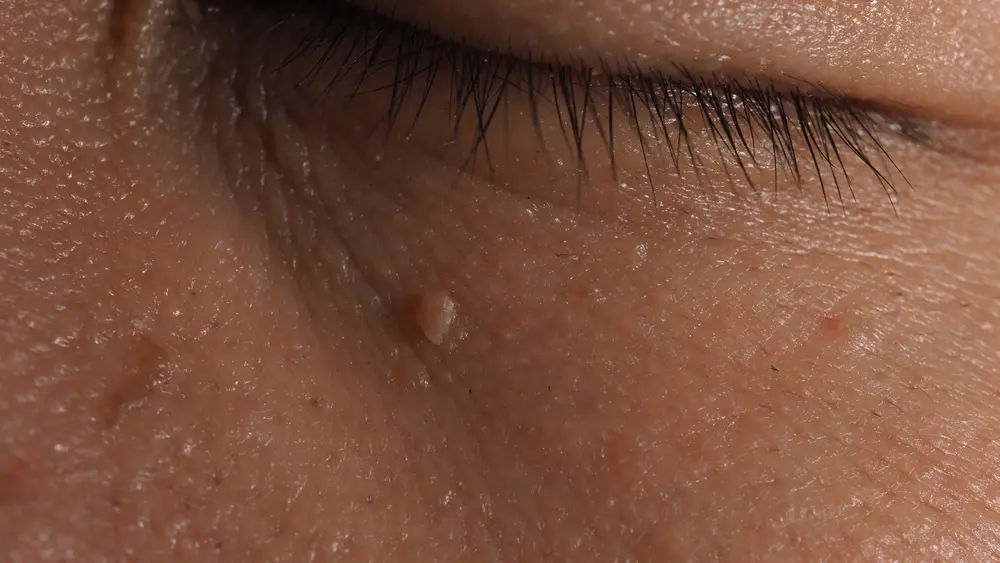Skin Tags
- Home
- Skin Tags
Our Doctor

Dr. Rahul Sheshgiri
Dermatologist & Cosmetic Doctor
Skin Tags

Introduction
Skin tags, also known as acrochordons, are small, benign growths that commonly appear on the skin. While skin tags are typically harmless, they can be bothersome or cosmetically undesirable for some individuals. In this comprehensive guide, we delve into the world of skin tags, exploring their causes, symptoms, and effective removal options to provide valuable information for those seeking to understand and manage these common skin growths.
What Are Skin Tags?
Skin tags are soft, flesh-colored growths that typically occur in areas where the skin folds or rubs together, such as the neck, armpits, groin, and eyelids. They are composed of collagen fibers, blood vessels, and fat cells and often have a stalk-like structure that attaches them to the skin’s surface. Skin tags are non-cancerous and usually painless, although they may become irritated or inflamed if they catch on clothing or jewelry.
Causes of Skin Tags
The exact cause of skin tags is not fully understood, but several factors may contribute to their development:
Friction: Skin tags often occur in areas where the skin experiences friction or rubbing, such as the neck, underarms, and groin. This constant friction may stimulate the growth of skin tags over time.
Hormonal Changes: Hormonal fluctuations, such as those that occur during pregnancy or in individuals with hormonal imbalances, may contribute to the development of skin tags. Pregnant women are more likely to develop skin tags due to changes in hormone levels and increased blood flow to the skin.
Obesity: Obesity is a risk factor for skin tags, as excess body weight can lead to increased friction and skin folds, particularly in areas prone to skin tag formation.
Genetics: There may be a genetic predisposition to developing skin tags, as they tend to run in families. Individuals with a family history of skin tags may be more likely to develop them themselves.
Symptoms of Skin Tags

Skin tags are typically small, soft, and flesh-colored, ranging in size from a few millimeters to several centimeters in diameter. They may appear singly or in clusters and often have a stalk-like structure that attaches them to the skin’s surface. While skin tags are usually painless, they may become irritated or inflamed if they catch on clothing, jewelry, or other objects.
Effective Removal Options for Skin Tags
While skin tags are generally harmless, some individuals may choose to have them removed for cosmetic reasons or if they become irritated or inflamed. Several effective removal options are available, including:
Cryotherapy: Cryotherapy, or freezing, is a common method for removing skin tags. Liquid nitrogen is applied to the skin tag using a cotton swab or spray applicator, freezing the tissue and causing it to fall off within a few days.
Electrocautery: Electrocautery involves using a small electrical current to burn off the skin tag. A local anesthetic may be applied to the area to minimize discomfort during the procedure.
Ligation: Ligation, or tying off, is another method for removing skin tags. A healthcare provider may use surgical thread or dental floss to tie off the base of the skin tag, cutting off its blood supply and causing it to shrink and fall off over time.
Excision: Excision involves cutting the skin tag off with a scalpel or surgical scissors. This procedure is typically performed under local anesthesia to minimize discomfort, and the wound is usually closed with sutures or left to heal on its own.
Over-the-Counter Remedies: There are several over-the-counter remedies and home remedies available for removing skin tags, such as topical creams, oils, or patches. However, these methods may not be as effective as professional removal techniques and may carry a higher risk of scarring or infection.
Conclusion

Skin tags are common, benign growths that often occur in areas where the skin folds or rubs together. While skin tags are typically harmless, they can be bothersome or cosmetically undesirable for some individuals. Fortunately, several effective removal options are available, including cryotherapy, electrocautery, ligation, excision, and over-the-counter remedies. If you have skin tags that are causing discomfort or concern, consult a healthcare provider for evaluation and personalized treatment recommendations. With the right approach, skin tags can be safely and effectively removed, allowing you to enjoy smoother, clearer skin.
What People Says!
Hear from our delighted clients as they share their experiences and stories of transformation. Your trust inspires us to keep delivering excellence!



